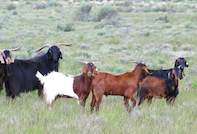Livestock Settlement
The area of Carnarvon was first inhabited by the San-Bushmen, who roamed the sparse plains and made a home from sandy rocks and medicinal shrubs. But eventually, the community of San had to migrate.

As they were peaceful hunter-gatherers, they could not defend their way of life when migrating livestock farmers moved into the region. The game that they depended on for their livelihood became scarce as the large herds of domestic animals competed with the game for grazing. At the same time hunters with firearms killed off large numbers of game. The only evidence that remains today of their presence is the thousands of rock engravings on the black boulders of the Karoo.
Carnarvon’s convoluted modern history started when the San-Bushmen left the area and a Xhosa settlement was started by the name of Schietfontein in the late 1700s. This community was under protection of the British, and in the 1800s a Rhenish Mission was built in the area. Subsequently, a village called Harmsfontein formed around it. The influence of British colonizers led to a name change - Harmsfontein became Carnarvon, and life was styled to favour British architecture, schooling, art and religion.